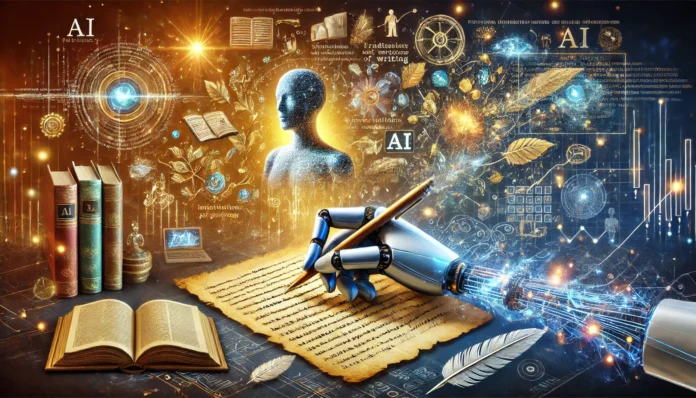The rise of artificial intelligence (AI) has brought transformative changes to many industries, including creative writing. What was once considered a uniquely human endeavor—the art of storytelling—is now being redefined by machine authorship. AI-powered tools like GPT-4, Jasper, and Sudowrite are producing poems, novels, and screenplays that challenge traditional notions of creativity and authorship. But as AI continues to push the boundaries of what machines can do, the question arises: Is machine authorship the new norm, or merely a supplement to human creativity?
The Role of AI in Creative Writing
AI systems are increasingly adept at generating written content, thanks to advancements in natural language processing (NLP). By analyzing vast datasets of existing literature, these tools learn to mimic human writing styles, genres, and tones with remarkable precision.
How AI Enhances Creative Writing
- Idea Generation: AI assists writers by suggesting plotlines, characters, and settings, helping overcome writer’s block.
- Example: Tools like Sudowrite brainstorm plot twists or refine dialogue for novelists.
- Automated Writing: AI can produce full-length articles, short stories, or poems in seconds, saving time and effort.
- Example: OpenAI’s ChatGPT can draft essays or fictional narratives based on user prompts.
- Editing and Feedback: AI-powered editors like ProWritingAid and Grammarly refine drafts, ensuring polished output with improved grammar, tone, and readability.
- Personalized Storytelling: AI tools adapt content for specific audiences, making stories more relatable and engaging.
Benefits of AI in Creative Writing
- Speed and Efficiency: AI enables rapid content production, allowing writers to focus on refining ideas rather than starting from scratch.
- Accessibility: AI democratizes storytelling by enabling individuals with limited writing skills to create compelling narratives.
- Exploration of New Styles: AI introduces unique perspectives and unconventional styles that inspire human writers to experiment.
- Cost-Effectiveness: For industries like advertising or journalism, AI reduces costs associated with hiring writers for repetitive tasks.
Challenges of Machine Authorship
Despite its potential, AI in creative writing is not without limitations and concerns:
- Lack of True Creativity: AI generates content by mimicking patterns in existing data. It cannot originate ideas or infuse works with authentic human experience.
- Ethical Questions: Machine authorship raises issues of copyright, ownership, and the ethical implications of attributing human-like creativity to AI.
- Homogenization of Content: AI-generated writing may lead to uniformity, as machines rely on predictable patterns and established trends.
- Impact on Human Writers: As AI takes on more creative roles, it may threaten traditional writing jobs or devalue human-authored works.
Real-World Examples of AI in Creative Writing
- GPT-4-Generated Novels: Writers use AI to draft novels, later refining them with their own voice and insights.
- AI in Screenwriting: Tools like DeepStory assist screenwriters in crafting engaging scripts.
- Interactive Fiction: AI-powered platforms like AI Dungeon let users co-create narratives in real-time, blurring the lines between writer and audience.
Is AI Replacing Human Writers?
While AI is undoubtedly reshaping creative writing, it is unlikely to replace human authors entirely. Writing is deeply rooted in human emotion, culture, and lived experience—qualities machines cannot replicate. Instead, AI serves as a powerful tool that complements human creativity, providing inspiration, enhancing productivity, and expanding possibilities.
The Future of AI in Creative Writing
The future lies in collaboration between humans and machines. Hybrid models, where AI assists writers rather than replacing them, are becoming the norm. Emerging technologies may further personalize AI-generated content, allowing writers to retain creative control while leveraging AI’s efficiency and versatility.
Conclusion
AI in creative writing is not just a technological advancement—it’s a cultural shift. While machine authorship is transforming the way stories are created, it is not a replacement for human creativity but an extension of it. As writers and readers adapt to this new reality, the focus should be on using AI to enhance, not overshadow, the unique art of human storytelling. Whether machine authorship becomes the new norm will depend on how we balance innovation with the irreplaceable value of human expression.





